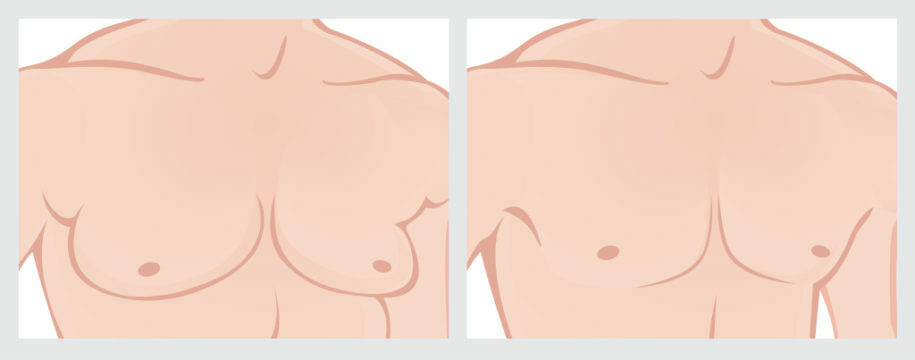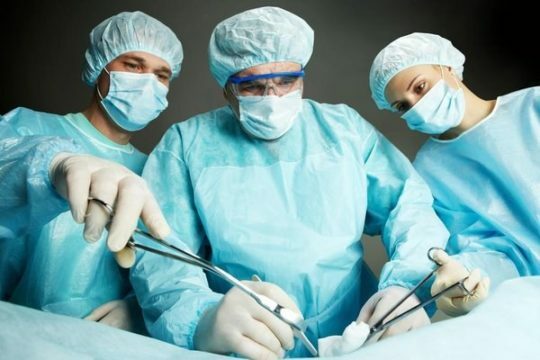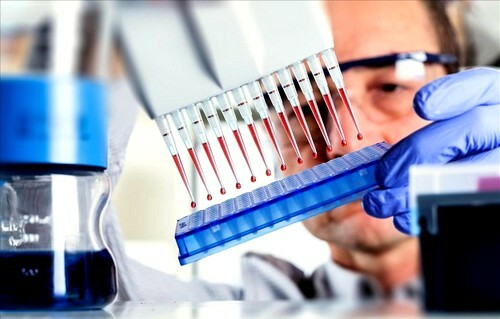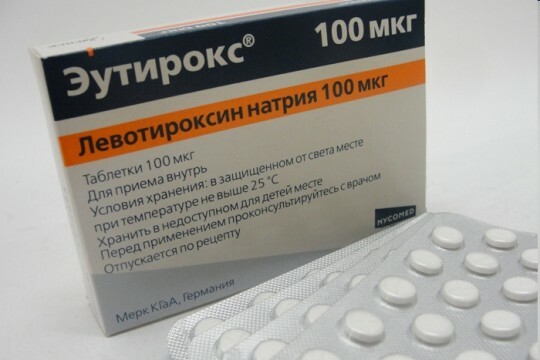Breast function in men is called gynecomastia. With such a pathology, the breast increases due to hypertrophy of glandular tissue or fat. When representatives of the stronger sex face such problems, the question arises, with gynecomastia to which doctor to apply.
Gynecomastia that this is
The increase in mammary glands in men is called gynecomastia. It can spread both to one side, and to two. There is a pathology of the appearance of a feeling of heaviness in the chest, its condensation and enlargement, as well as soreness to the touch.
It is possible to have a positive outcome without the intervention of doctors, but more often conservative treatment is used, and if it is ineffective, surgical intervention.
During the period of the disease, the mammary glands can grow to 10 cm in diameter. It often occurs among adolescents aged 13 to 14 years( from 50 to 70% of cases), it happens in young people( about 40%), often in old age( also up to 70%).In addition to physical discomfort, males begin to experience psychological anguish.
If the first unpleasant symptoms appear, you should immediately contact a doctor.
On what types of disease is distributed
There are several anatomical types of gynecomastia:
- true;
- mixed;
- is false.
Different types require their treatment and diagnosis, as well as treatment to the doctor.
The first type of
In this case, the glandular tissue grows, and the increase in the fat layer practically does not occur. Thus the breast becomes dense and elastic, there can be an itch in the field of nipples, and also a boring from touch and allocation.
Usually occurs due to genetic changes( Klinefelter syndrome or hermaphroditism).
Mixed
Iron and tissue are increased simultaneously, so it divides into two subtypes, depending on the larger increase in either fat or gland.
Often occurs in adolescence, then the glandular tissue dissolves, and in its place, the septa are formed. In this case, it resolves itself.
False
occurs due to the increase in adipose tissue. To the touch, the breast will be soft, and there are no other symptoms besides increasing the size.
Classification of pathology
I classify gynecomastia in 4 types:
- physiological;
- pathological;
- because of medication;
- is idiopathic.
Physiological
The first type occurs in newborns. This increase is due to the ingestion of estrogens to the baby through the mother's blood. The disease passes by itself, and the child quickly returns to normal.
And also it occurs in adolescence, as there is an increase in the level of FGS and a decrease in testosterone levels. Usually this type also passes by itself, but with a strong increase, the skin can stretch and then surgical correction of the tissue will be required.
In old age, gynecomastia is also not treated, as it is due to "male menopause" and a natural drop in testosterone levels in the blood.
Pathological
This kind can be a consequence of a number of diseases that cause hormonal disorders.
A drop in testosterone in the blood can be a congenital gene defect, a lack of testicles, or a secondary testicular failure after injury, as well as an increased rate of aromatization.
An increase in estrogen levels may occur, caused by the synthesis of it in the testicles, tumor or adrenal gland diseases and fasting.
And also there is an increase in the level of prolactin, the origin of which can be different.

If the disease is caused by taking medications, then prescribe other tablets that have the opposite effect. If the etymology is ideopathic, that is, there are no identified causes, then a plastic correction is prescribed without the use of hormones.
stages of the disease like any other disease, gynecomastia occurs in several stages:
- develops when the first changes appear. It lasts 4 months, and during this period the reverse development is possible.
- Intermediate. There is a maturing of the gland, it can end in four months or a year.
- Fibrous. Appears fat and connective tissue, natural recovery is almost impossible.
Diagnosing the disease can be several qualified physicians:
- surgeon;
- oncologist;
- the urologist;
- endocrinologist;
- mammologist.
And only a qualified specialist will put a correct diagnosis. Assigning an ultrasound of the mammary glands, tests for hormones, X-rays and, if necessary, MRI.
Treatment of breast pathology in men
First of all, the treatment will be based on the etymology of the disease. Only by identifying the true cause, the doctor will be able to prescribe the correct treatment or leave gynecomastia without him.
Treatment methods are conservative or surgical. In this case, if the disease has arisen because of an increase in body weight, then the impact on the body in the first place will be aimed at reducing the overall weight. In the adolescent period, nothing is usually done, as well as in the elderly.
If a pathology is identified that requires treatment, it is not necessary to go to the hospital. In most cases, it is enough to take hormonal medications, which are prescribed by a doctor. They will be aimed at reducing or increasing the hormone that predominates in the blood and causes changes in the mammary glands.
Treatment with surgical intervention is rarely prescribed. There are several operations to eliminate the disease or its consequences:
- Mastectomy. Complete removal of the breast with nipples.
- Subcutaneous mastectomy, with the help of which the external shape of the breast is preserved.
- Removal with para-aureolar incision.
- Endoscopic. Applied only with small dimensions of mammary glands.
In order not to bring the case to an operation, you should consult a doctor who will diagnose and prescribe the treatment. Since at endoscopy to which exact doctor there are no recommendations, you can choose anyone that causes you more confidence. And do not forget that in adolescents the disease goes by itself, but you should follow the excess weight.







